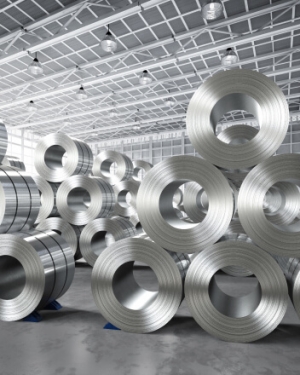


(Posted on 18/04/23)
A new survey of automakers and Tier 1 suppliers conducted by Ducker Carlisle concludes that as electric vehicles continue to enter the mass market, aluminium demand will grow through the end of the decade. The report, “2023 North American Light Vehicle Aluminium Content and Outlook,” released today by the Aluminium Association indicates that demand for more sustainable transportation will help drive an increase in market share for aluminium content by nearly 100 net pounds per vehicle (PPV) from 2020 to 2030.
“Consumers want cars and trucks that are more sustainable, more electrified and filled with more technology, and automakers are responding with a host of innovations, all enabled by high-strength, low weight and infinitely recyclable aluminium,” said Mike Keown, chair of the Aluminium Transportation Group and CEO of Commonwealth Rolled Products. “The aluminium industry is committed to ensuring consumers experience the performance and environmental benefits of aluminium as more and more vehicles are designed with the metal in the years ahead. Greater collaboration with automakers will bring to life this vision, set forth by the aluminium industry in its 10-year roadmap. And as mega-casting and closed-loop recycling continue to advance, aluminium producers remain vital partners in helping automakers achieve aggressive carbon neutral targets.”
The report, which reflects data collected during an 8-month period through interviews with leading automakers, Tier 1 suppliers and aluminium producer companies, identifies five key market themes:
Proliferation of BEVs will dramatically change the NA light vehicle landscape. BEV share of production nearly doubled from just under 3% in 2020 to approximately 6% in 2022. By 2030, BEVs, which on average are more aluminium-intensive, are expected to exceed 36% share of production.
Trend toward larger vehicles that have more aluminium content per vehicle. Consumers affinity toward larger vehicles continues, helping drive increased aluminium growth. In 2022, light trucks outnumbered cars four to one and contained more than 30% more aluminium than cars.
Aggressive CO2 and Miles Per Gallon (MPG) regulatory targets helping drive EV adoption and aluminium growth. Recent federal regulation ushering in more stringent CO2 and MPG targets expected for 2027 to 2030 incentivizes EV adoption and helps further drive aluminium growth.
Aluminium content per vehicle continues its uninterrupted growth. A net gain of 56 pounds per vehicle is expected between 2020 and 2025 with aluminium growing by almost 100 net PPV between 2020 and 2030 to 550 PPV, a 233% increase over 1990, when aluminium accounted for just 165 PPV.
Near term aluminium growth led by extrusions and sheet. Extrusions demonstrate significant growth within the body-in-white (BIW) and crash management systems (CMS) gaining 47 pounds per vehicle from 2020 to 2030, becoming the fastest growing product form, while auto body sheet (ABS) and sheet for thermal management systems will increase 41 PPV from 2020 to 2030. Castings remain the largest aluminium product form, but growth is limited as powertrain and transmission components are replaced by e-drives, battery housings, high-voltage devices, etc.
“Electrification positively affects aluminium content and compensates for the transition away from powertrain and transmission components, which are primarily aluminium,” said Abey Abraham, principal of automotive and materials at Ducker Carlisle. “As electrified powertrains create significant growth opportunities for aluminium, more stringent fuel economy standards also continue to promote mass reduction in ICE vehicles.”
ADM and Mitsubishi Corporation have signed a non-binding memorandum of understanding to form a strategic... Read more
ESL Shipping and global steel manufacturer SSAB have agreed on a multi-year extension of the agreement... Read more
Anglo American’s Sakatti copper and polymetallic project in Finland has been designated as a &... Read more
FEFAC, representing the EU compound feed and premix manufacturers, noted with deep concern the announced... Read more
Catering to the growing demand from India’s confectionery, infant formula, and dairy sectors,... Read more
Khalifa Economic Zones Abu Dhabi – KEZAD Group, the largest operator of integrated and purpose... Read more
Rio Tinto will invest $1.8 billion1 to develop the Brockman Syncline 1 mine project (BS1), extending... Read more
Catherine Cobden, President and CEO of the Canadian Steel Producers Association (CSPA), has released... Read more
Enough domestic ferrous scrap is available for electric arc furnace (EAF) steelmakers to supply nearly... Read more
Cargill’s Ocean Transportation business and leading tanker shipping company, Hafnia, have joined... Read more